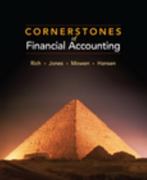Question
Solution: NPV = Present value of annual after tax cash inflows - initial outlays = [{(P-V)Q - FC}(1-t) + Dep.* t ] * (A/P,16%,4) -

Solution:
NPV = Present value of annual after tax cash inflows - initial outlays
= [{(P-V)Q - FC}(1-t) + Dep.* t ] * (A/P,16%,4) - $520,000
= [ {80,000($74-36) - $2,100,000}(1-0.35) + ($520,000/)4 *0.35]2.79818 - $520,000
= ($611,000 + 45,500)2.79818 - 520,000
= $1,317,005.17
sensitivity to change in quantity sold:
NPV at new sales level = [ {100,000($74-36) - $2,100,000}(1-0.35) + ($520,000/)4 *0.35]2.79818 - $520,000
= ($1,105,000 + 45,500)2.79818 - 520,000
= $2,699,306.09
Thus, sensitivity = NPV / Q = ($2,699,306.09 - $1,317,005.17) / (100,000-80,000)
= +$69.12
This no. shows that NPV will increase by $69.12 for every additional unit sold.
So the solution above is what I found on a previous chegg question but how did they get the number 2.79818 and how did they get the number 100,000 for the new quantity?????
A four year project has an initial investment in plant and equipment of $520,000, which will be depreciated on a straight line basis over the four year life of the project. The company will sell 80,000 units at a price of $74 each and a variable cost of $36. Fixed costs are $2,100,000, the tax rate is 35% and the cost of capital is 16%. What is the NPV of this project? How sensitive is NPV to changes in quantity sold? What does this number mean? $ Equipment Project life (years) Sales (units) Price/unit Variable cost/unit Fixed costs Tax rate Required return $ $ $ 520,000 4 80,000 74 36 2,100,000 35% 16% New Quantity 100,000Step by Step Solution
There are 3 Steps involved in it
Step: 1

Get Instant Access to Expert-Tailored Solutions
See step-by-step solutions with expert insights and AI powered tools for academic success
Step: 2

Step: 3

Ace Your Homework with AI
Get the answers you need in no time with our AI-driven, step-by-step assistance
Get Started


